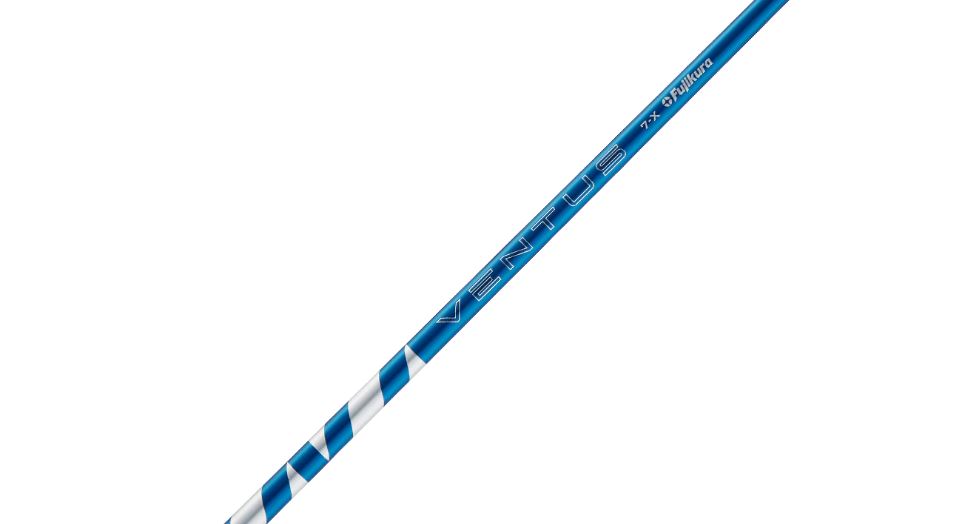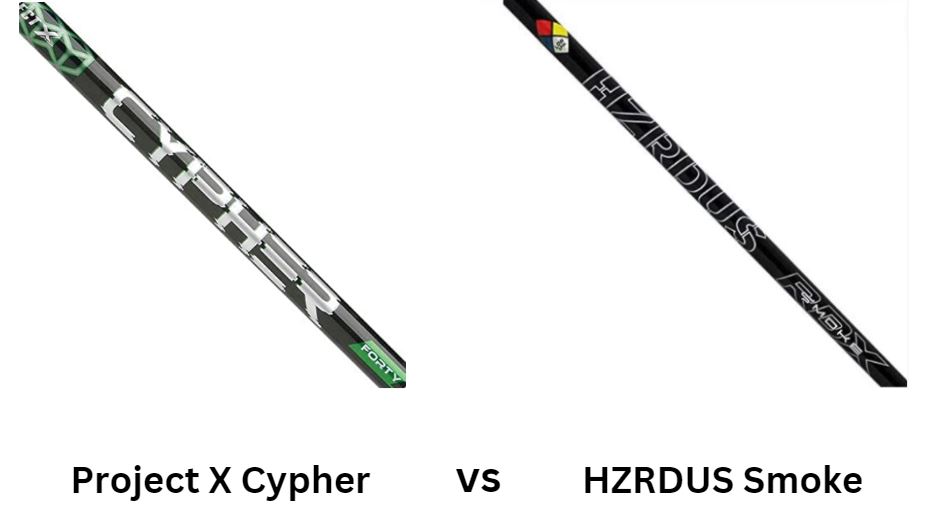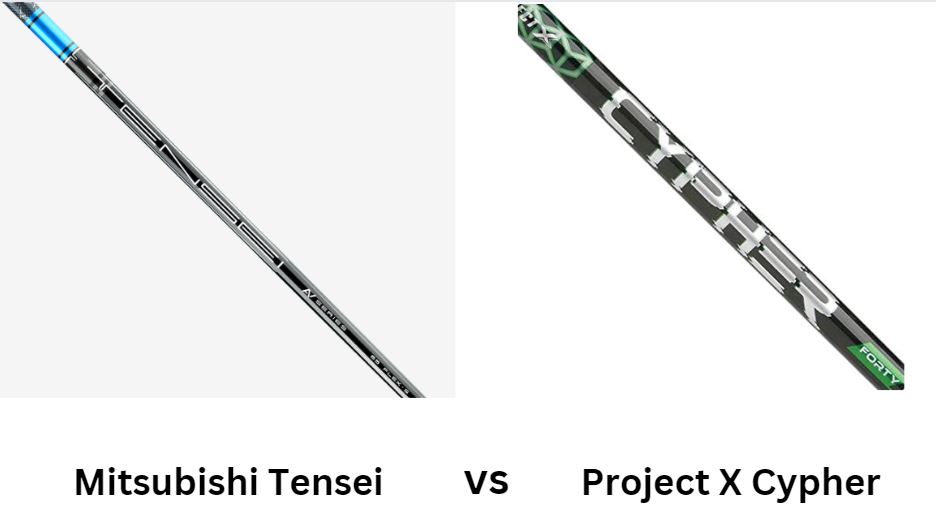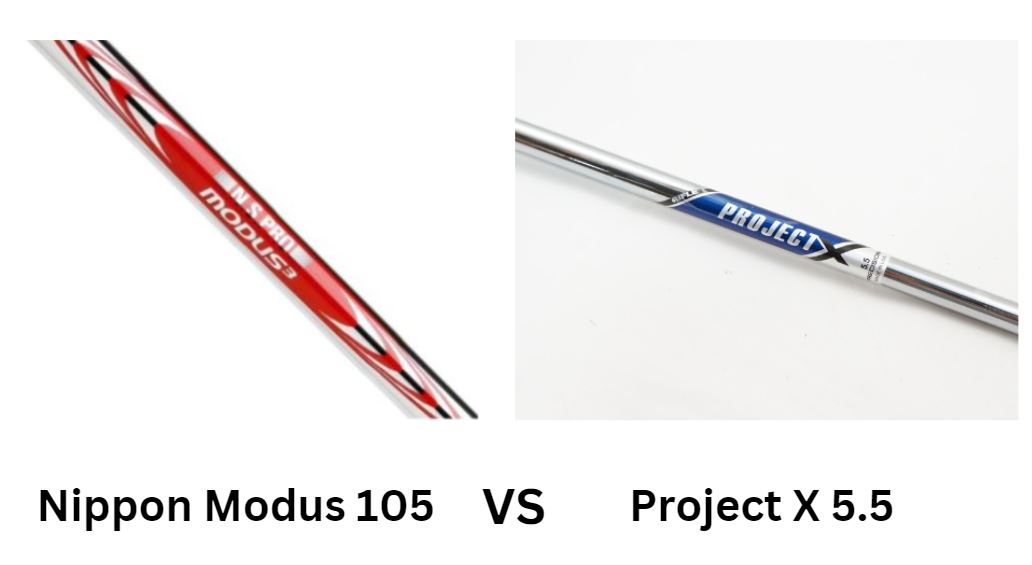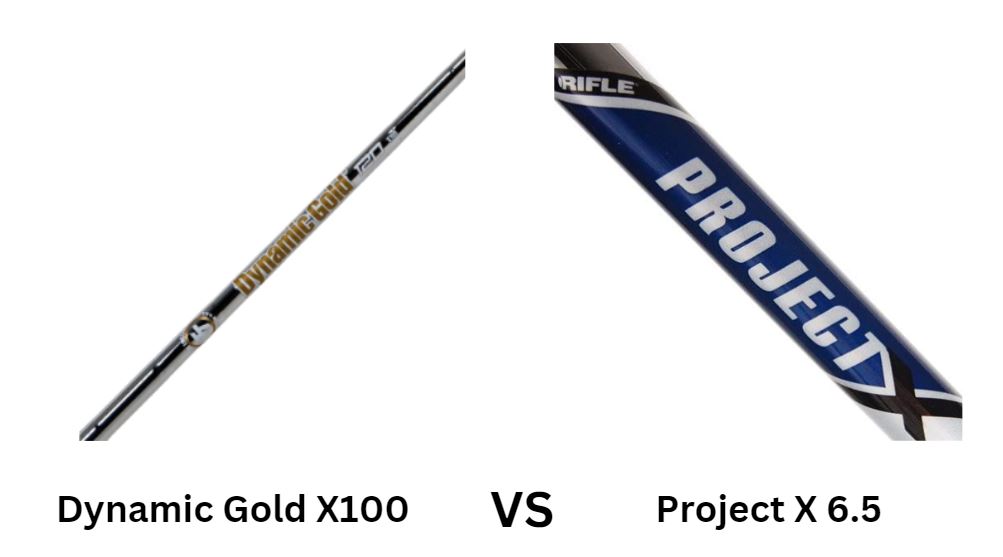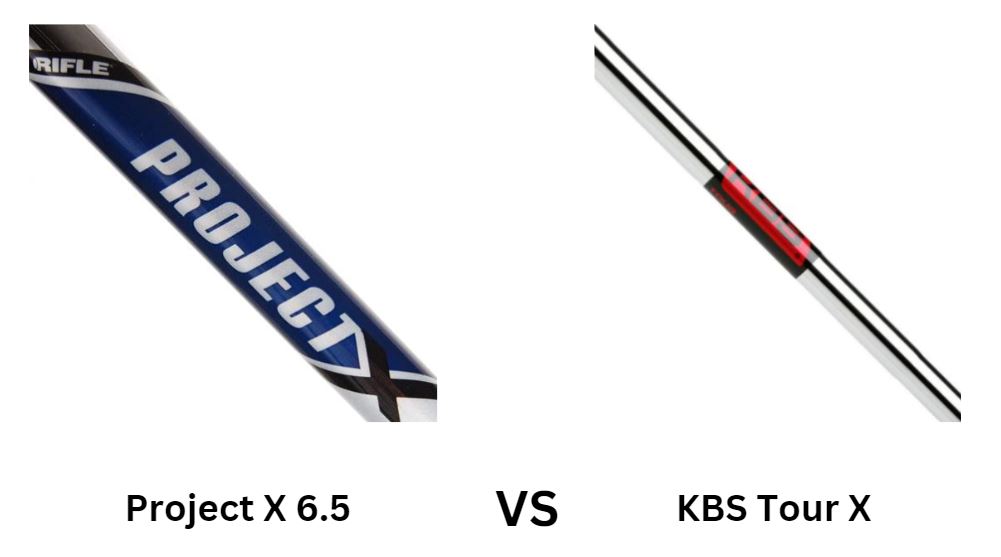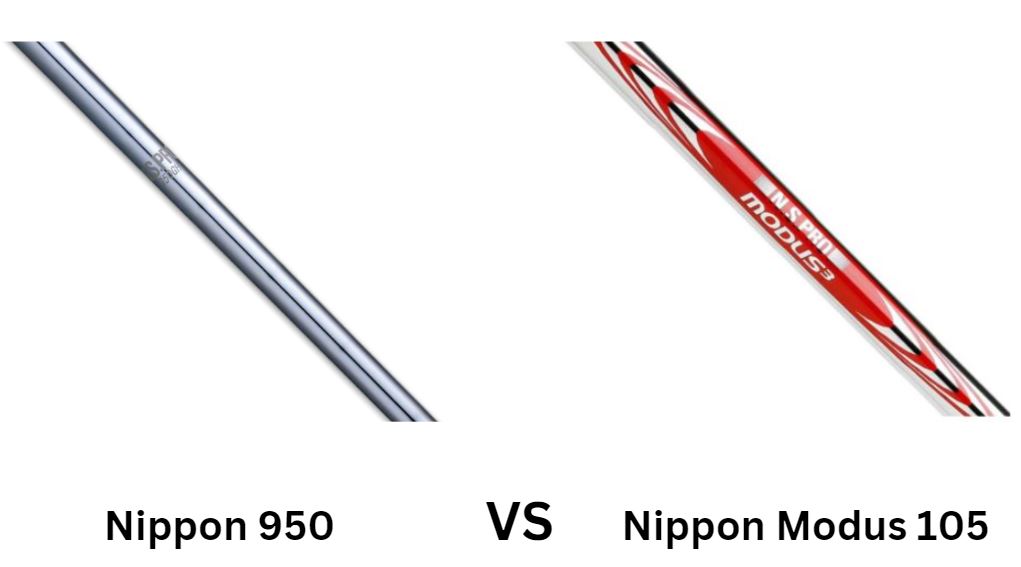How Do I Choose The Right Golf Club Shafts – Complete Buying Guide
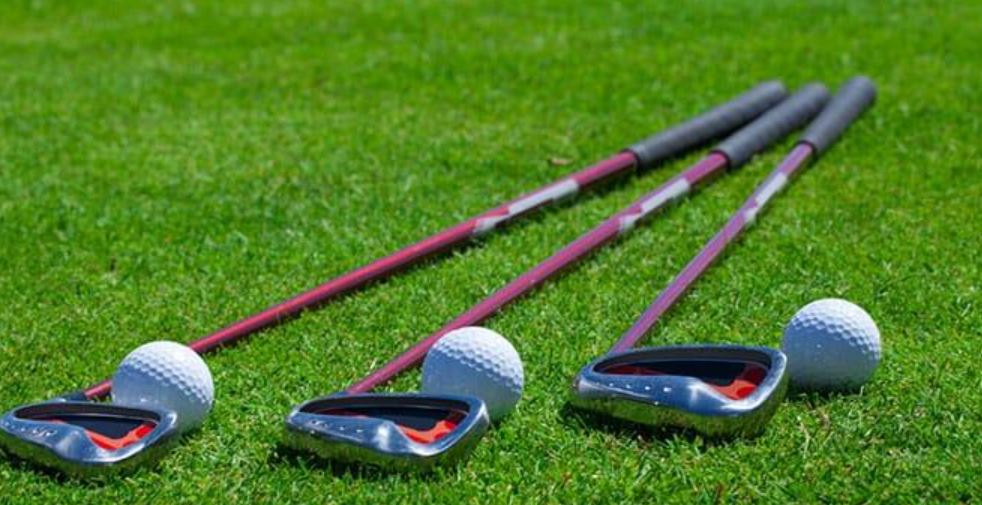
Choosing the right golf shaft for your clubs can become very confusing as there are so many options out there. Having the right shafts in your clubs can make a big difference with regards to your control, spin, launch and feel.
As a beginner or high handicap golfer keeping it simple is the best way to do things, focusing mainly on the stiffness is all you should be doing, your swing will be too inconsistent to dive into further details.
As you improve, moving to a mid or low handicap golfer, then you can get into your details like weight, feel, launch etc.
This guide is going to dive into all the details you need with regards to choosing the right shaft for your game.
Things You Need To Consider When Buying Golf Shafts
Purchasing the right golf shaft when buying any golf club is very important. Golf clubs have become very expensive, so buying a set of clubs with the wrong shafts is putting your money to waste.
Depending on the type of golfer you are, you do not necessarily need to go into too much detail, but at least choosing the right shaft flex is a must. Some players and most low handicap players will go into some real detail, like weight, material, kick point, spin etc. We will dive into those details below.
Materials
Steel – Who – What Clubs – Pros & Cons
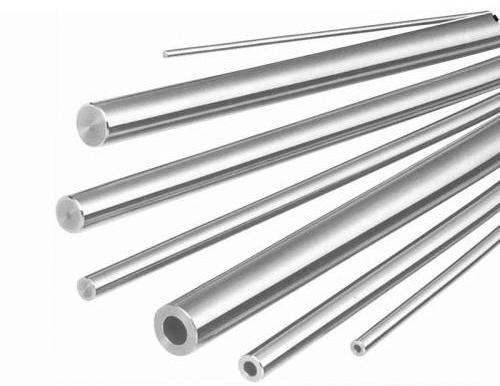
Steel shafts are mainly found in irons, until 1969 steel shafts were also in drivers and fairway woods, now graphite shafts are mainly found in drivers and fairway woods.
Steel shafts range from 85 grams to 130 grams. They are a lot heavier and stiffer than graphite shafts, these would suit you low handicap and stronger player.
Steel shafts have no torque and twisting when you swing the club, this gives you a lot more control when swinging at high swing speeds, because the club head does not twist.
There are two different types of steel shaft:
- Stepped Steel Shafts
All shafts are thicker near the grip and thinner near the head. Stepped steel shafts are used to reduce the diameter of the shaft from the grip towards the head. This manufacturing process gives each shaft the same stiffness throughout an entire set. Stepped steel shafts are used in most irons.
- Rifle Shafts
The Rifle shafts are a steel that is smooth and has no steps.
This technique is used to provide a greater performance and consistency, compared to a stepped shaft, it also gives you less vibrations. This process makes the shafts more expensive than stepped shafts. Generally these shafts have less feel and are stiffer than stepped shafts, not making them ideal for high handicap golfers.
Pros
- Steel shafts are inexpensive
- Provide more control than graphite shafts for high swing speed golfers
- Stepped shafts provide great feel
Cons
- Could be too heavy for senior golfers
Graphite – Who – What Clubs – Pros & Cons
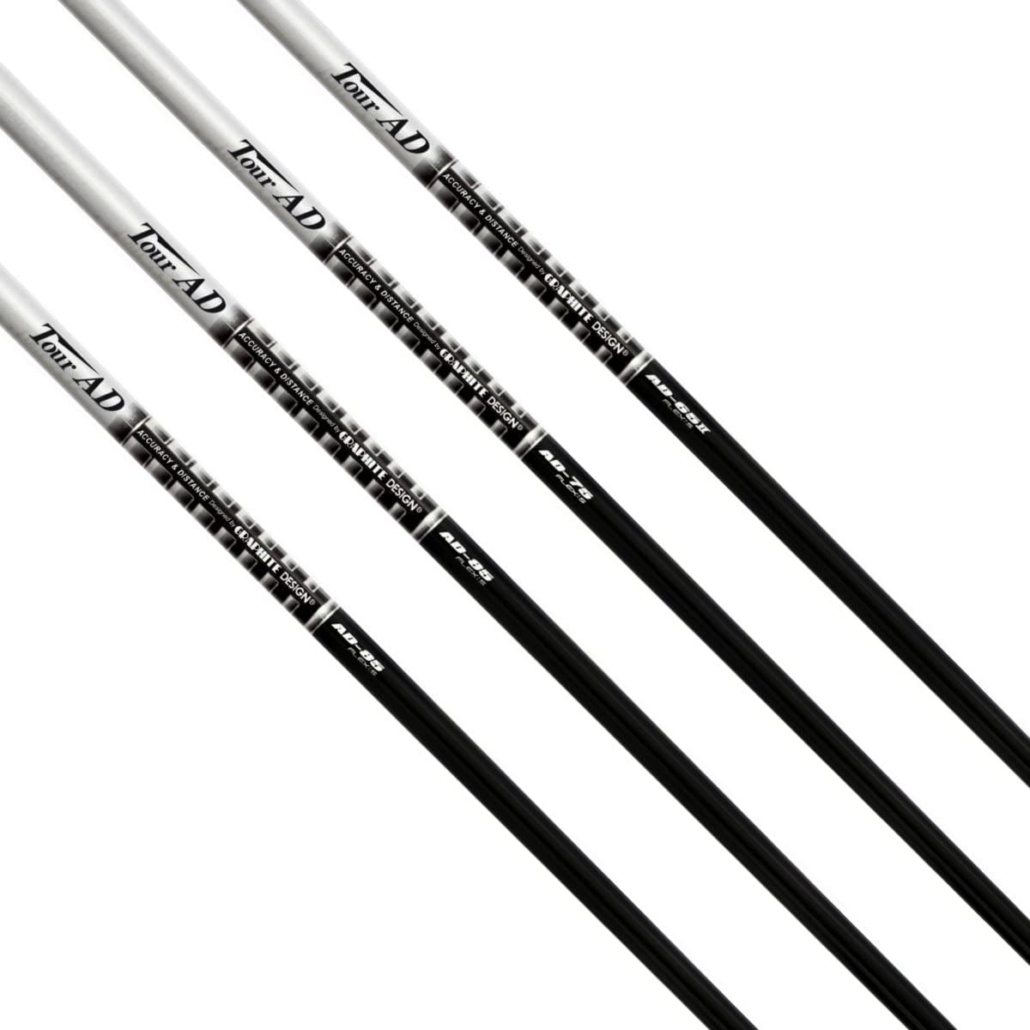
Graphite shafts are found in both metal woods and irons. Only recently have we seen graphite shafts being used in irons. These are usually used in senior and ladies flex shafts as they can be made a lot lighter, helping them create speed, and it makes it easier to swing.
Technology is evolving and you are seeing a lot more graphite shafts in stiffer flexes, the process is difficult because stiffer shafts need to be heavier.
In general the lighter weight helps increase club head speed. The graphite material is a lot more expensive compared to steel.
The process of making a graphite shaft is tricky. Firstly the graphite tape is wrapped around a steel poll using an epoxy binder. The shaft is then heated, once this is complete the steel poll is removed. Once the shaft is cooled, it is sanded, cut and painted. This process also allows the manufacturer to position weight in specific parts of the shaft, making it stiffer or more flexible in certain areas in the shaft. This helps create specific launch and spin characteristics in the shaft.
Pros
- Lighter for more speed
- Great for senior and lady golfers
- Can be made with specific weighting to help with launch and spin
Cons
- They can be very expensive
- Can break much easier than steel shafts
- Most are not heavy enough for fast swing speeds in irons
Weight
- Why Weight Is Important For Shafts
The weight of steel and graphite shafts are incredibly important. They control a number of factors, which are important for hitting good golf shots.
Feel – they control the way the club feels in your hands, some players like lighter clubs, where others like heavier.
Speed – the weight of the shafts influence the speed you swing the club, someone with a slower swing speed would benefit from lighter shafts, this will help increase club head speed.
Control – the weight of the shaft helps you control the ball, if the shaft is too heavy or too light for you, it will be much harder for you to control the club head, which will influence accuracy and launch.
- How To Know What Weight You Need
There is a rule of thumb that the slower you swing the lighter shaft you need, and the faster you swing the heavier shaft you need. This is all there to help with control and speed creation.
Have a look at the table below to help you find the correct weight for your swing speed.
Swing Speed Vs Shaft Weight Table For Driver & For Irons
This table should give you a pretty good idea of what shaft weight you will need for your swing speed.
Irons
| 6 Iron Swing Speed | < 60 mph | 60 – 70 mph | 70 – 80 mph | 80 – 90 mph | 90 mph + |
| Shaft weight | 45 – 50 grams | 55 – 85 grams | 75 – 105 grams | 90 – 120 grams | 115 grams plus |
Driver
| Driver Swing Speed | 75mph | 75 – 85 mph | 85 – 95 mph | 95 – 105 mph | 105 mph plus |
| Weight | < 45 gram | 45 – 55 grams | 55 – 65 grams | 60 – 65 grams | 65 grams plus |
- How Can I Tell My Swing Speed?
The only way to find out your swing speed is to use a launch monitor. You can find these at most golf retail stores, your local professional and fitting center.
You can also buy one yourself, but unless you are going to use it often then it is not worth it, they are very expensive.
Shaft Flex
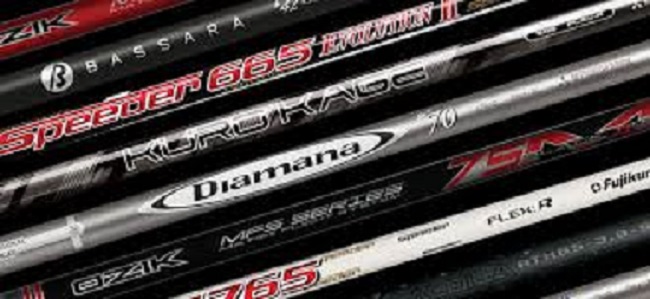
- Why Flex Is Important For Shafts
The flex of the shaft is directly related to your swing speed, the faster you swing the club the stiffer your shaft needs to be. You might not notice a big difference, but in golf every little bit counts.
The flex of the club will influence a few factors when striking the ball, your spin, launch and control are directly influenced by the shaft flex.
If your shaft is too flexible you will generally have too much spin, and the opposite if it is too stiff. A shaft that is too flexible will also launch the ball too high and a shaft that is too stiff will be harder to launch into the air. Lastly if your swing speed is fast, a stiffer shaft will give you more control.
- How To Know What Flex You Need For Each Club
Over years of testing, shaft manufacturers have come up with recommended shaft flexes for your swing speed. You will have to know your swing speed by getting tested on a launch monitor to know which shaft flex works best for you.
Have a look at the table below to see which shaft flex matched your swing speed.
- Swing Speed Vs Shaft Flex Table
Driver
| Swing Speed | < 75 mph | 75 – 85 mph | 85 – 95 mph | 95 – 110 mph | 110+ mph |
| Flex | Ladies | Senior | Regular | Stiff | X-Stiff |
Iron
| 6 Iron Swing Speed | < 60 mph | 60 – 70 mph | 70 – 80 mph | 80 – 90 mph | 90 mph + |
| Flex | Ladies | Senior | Regular | Stiff | X-Stiff |
Torque
- Why Torque Is Important For Shafts
The torque of the shaft is how much it twists during the swing, stiffer shafts have a low torque, and more flexible shafts have a high torque. Iron shafts have no torque.
Low torque prevents the club head from twisting, this would be good for players with high swing speeds. High torque allows the club to twist and return a square or a closed position at impact, this is ideal for golfers with a low swing speed.
- How To Know What Torque You Need For Each Club
Generally stiff shafts have a low torque and shafts that are more flexible have a high torque. A low torque will be 2,5 and less, whereas a high torque will be 5.0 plus.
Kickpoint
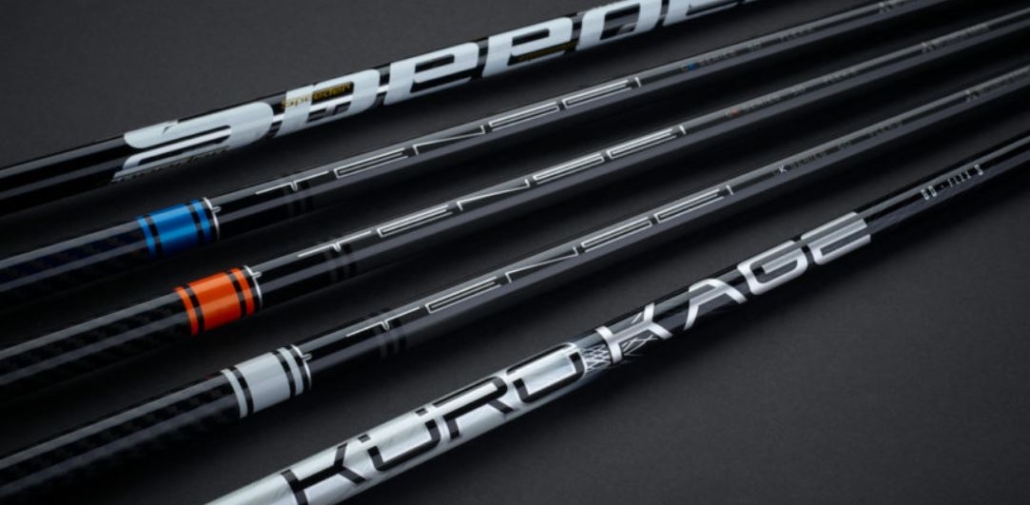
- Why Kick Point Is Important For Shafts
The kick point of the shaft is where the shaft is the least stiff, this helps manufacturers control the launch and spin of the shaft.
A shaft with a high kick point will have a low launch – low spin characteristic, a shaft with a mid kick point will have a mid launch – mid spin characteristic, and a shaft with a low kick point will have a high launch – high spin characteristic.
- How To Know What Kick Point You Need For Each Club
Slow swing speed golfers need help to launch the ball in the air and create spin, so going with a low kick point shaft would help with that, and a golfer with a fast swing speed will need to control his launch and reduce his spin, so going with a shaft that has a high kick point would be recommended.
- What To Look For In Fairway Wood & Hybrid Shafts
For the average golfer going with the same shaft you have in your driver will be good enough. Once you become a low handicap or skilled player, testing different shafts in your fairway wood and hybrid is an option.
The only difference will be the weight. Fairway woods need to be heavier than a driver shaft as the club is shorter, so to get the club weight right the shaft needs to be heavier, and the same thing with the hybrid, the club is shorter than a fairway wood, so the shaft needs to be heavier to make the club’s total weight correct.
- What To Look For In Wedge Shafts?
All wedges come with specific wedge shafts, these are slightly different to your iron shafts. The tip section is a little more active, this gives you more spin and control. The weight is generally a lot heavier this is to make up for it being short.
If you are a lady or senior golfer, we would recommend having graphite shafts in your wedges too, the standard wedge flex shafts will be too heavy.
For your average golfer sticking with the standard wedge flex that comes in your wedge is perfect, there is no need to go and get custom fitted for wedge shafts.
- What To Look For In Putter Shafts?
99% of the time a putter shaft is just a normal steel shaft with no flex. The difference comes in with the hosel. You get 3 different types of hosel in putters, and these all match up to your putting stroke.
Face balanced shafts match a straight back straight through stroke, there will be minimal rotation in the putter head to match your stroke. Single or double bend shafts are face balanced.
To know if a putter is face balanced, balance it on your finger on its balance point, if the putter face is pointing straight up, it is a face balanced putter.
Toe hanging putters are for players with an arc in their stroke, the head will rotate slightly to match your putting stroke. Some putters have more toe hang than others, these would suit players with a big arc in their stroke.
L-Neck, short slant and flow neck are all toe hanging putter hosels. Again to see if the putter is toe hanging, balance it on your finger on its balance point, if the putter face is hanging down, it is a toe hanging putter.
FAQs
Q: Does shaft flex increase distance?
The shaft itself won’t increase distance. But having the right shaft flex and weight for your swing will improve your launch numbers and swing speed, therefore increase your distance.
Q: What happens if your shaft is too flexible?
If your shaft is too flexible your launch and spin will be too high, this will decrease your distance. The shaft will also twist too much causing the clubhead to open and close uncontrollably. Generally if the shaft is too flexible the club face will be closed at impact causing you to hit the ball left.
Q: What happens if your shaft is too stiff?
If the shaft is too stiff you will struggle to get the ball up in the air, your spin and launch will be too low. This will also decrease your distance. Generally if the shaft is too stiff the club face will be open at impact, this will cause you to hit the ball to the right.
Q: Is stiff shaft better than regular?
A stiff shaft is not necessarily better than a regular shaft, it all depends on your swing speed. You need to find the right flex for your swing speed.
Q: Do you lose distance with stiffer shafts?
No you don’t. You will only lose distance if the shaft is too stiff specifically for your swing speed. I find players tend to swing the club faster with stiffer shafts, this is because they can feel more control.
Q: Do any pros use regular shafts?
No they don’t, their swing speeds are too fast for regular flex shafts, majority of them use X-Stiff shafts. That is one flex stiffer than a stiff shaft.
Q: How can I test my swing speed at home?
This cannot be done unless you have a launch monitor, there are smaller devices that can be used at home, but they are still expensive. Here is a list below
- Garmin R10 – click here to view their website
- FlightScope Mevo Plus – click here to view their website
- Rapsodo Mobile Launch Monitor – click here to view their website
- Swing Caddie SC300i – click here to view their website
Q: Can an iPhone measure golf swing speed?
Yes they can, well so they say. There are a few apps that say they can do this, but we feel they are very inaccurate. There is a lot of software and hardware that go into launch monitors, not to mention the radar and camera technology. An iPhone does not have the capability of doing this.
Q: Who Should be Using Senior Flex
All players that swing it 70mph and less with an iron and 85mph and less with a driver. Irrelevant of your age, if your swing speed is under the above then you should use a senior flex shaft.
Conclusion

Choosing the right shaft flex for all your clubs is extra important. You might not see instant results, but having the right shaft in your club will make a big difference in the long run.
The golf shaft affects your spin, launch, distance and control. These are all extremely important if you want to consistently hit good golf shots.


